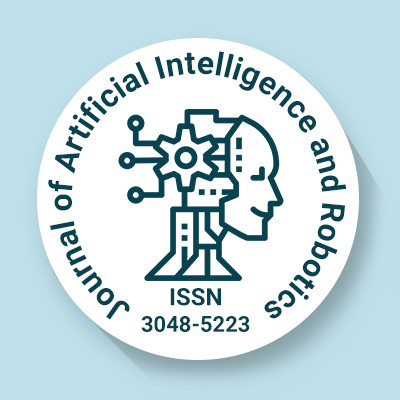
Journal of Artificial Intelligence and Robotics
OPEN ACCESS
ISSN: 3048-5223

OPEN ACCESS
ISSN: 3048-5223
Machine learning is a subfield of artificial intelligence that allows computer systems to learn without being explicitly programmed. Using algorithms and statistical models to recognize patterns in data, ML drives applications such as speech recognition, image classification, and predictive analytics. It is widely applied in industries such as healthcare, finance, and cybersecurity to enhance decision making and automate intricate tasks.
Machine learning algorithms are based on huge quantities of data and computational power to develop models that are capable of making predictions or classifications. These systems learn from previous data, identifying patterns and trends that can be applied to new, unseen data. There are three categories of machine learning.
The health sector has been widely impacted by machine learning advances. AI models assist in disease detection, patient outcome prediction, and personalized treatment plans. Machine learning based image recognition software detects disease conditions. Predictive analysis allows clinical practitioners to anticipate patient decline, enhancing response time and medical interventions.
Machine learning enhances risk assessment, anti-frauds and algorithmic trading in the finance sector. Machine learning is used by banks and financial institutions to screen transactions for fraud and filter out fraudulent ones in real time through the utilization of ML models. Credit scoring models use machine learning to identify borrowers based on creditworthiness, whereas robo-advisors provide personal investment guidance through individualized investment recommendations following market trends.
Home automation solutions use ML in order to regulate energy consumption, security and preferences of users. Siri and Alexa virtual assistants are based on machines for comprehension and feedback to offer precise results.
AI security systems are capable of identifying discrepancies, detecting breaches, and preventing cyberattacks be capable of detecting variances, spotting breaches, and preventing cyberattacks. Machine learning algorithms, interpreting network behavior help companies deflect phishing, malware and unauthorized access. ML algorithms, which analyze the behavior of networks, assist companies in fending off phishing, malware, and unauthorized attempts.
To enhance ML models’ transparency and trustworthiness, scientists are working more to create explainable AI (XAI). Quantum computing and edge AI will continue to transform machine learning in the future, improving its efficiency. Machine learning is advancing into new domains, extending automation, decision-making, and problem solving capabilities into a vast array of industries.